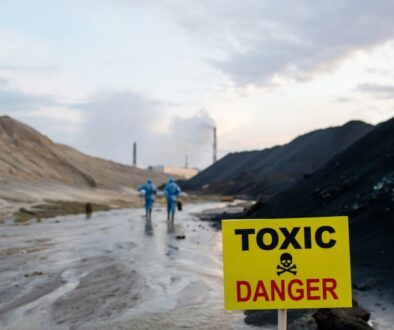Guest column: Prioritize children’s health above agribusiness profits

By Lendri Purcell
Many decades ago, my mother-in-law set an example I always try to follow: As an activist challenging certain government policies, she centered her work on a foundational question: Is it good for the children?
Now I’m doing the same, working through a group in the San Francisco Bay area to raise awareness about ties between childhood diseases and pesticides, and the growing economic and social burdens we all bear from overuse of these chemicals.
In 2012, The American Academy of Pediatrics urged policymakers to do more to protect children from pesticides. Yet, a decade little, our regulators have virtually ignored this plea.
In June, the Centers for Disease Control and Prevention (CDC) released data showing that out of 650 children tested, 87 percent had detectable levels of glyphosate – a weedkilling ingredient tied to cancer – in their urine. According to CDC researchers, children 18 and under are exposed to glyphosate primarily through food. This is because glyphosate is often sprayed directly onto growing crops, including as a desiccant shortly before harvest, leaving residues in finished food. Farmers often use glyphosate as a desiccant on oats, wheat, and other crops. Glyphosate residues have been found in oatmeal, bread products, and many other commonly consumed foods.
Efforts to ban glyphosate, the active ingredient in Roundup herbicide, have been pushed in countries around the world, but have fallen short in the United States, despite the fact that in 2015 the International Agency for Research on Cancer (IARC) declared glyphosate to be a probable human carcinogen.
The Environmental Protection Agency (EPA) has taken the position that IARC is wrong and that the chemical actually is “not likely” to be carcinogenic.
Meanwhile, more weeds are becoming “resistant” to glyphosate, so farmers dealing with glyphosate-resistant weeds often use glyphosate in combination with additional weed killers, such as 2,4-D, and dicamba, which come with their own health concerns.
Though the EPA assures us glyphosate and other widely used pesticides are safe, courts have challenged those assurances with findings of EPA short-comings related to many different pesticides. In July, the Office of Inspector General (OIG) for the EPA issued a scathing report identifying many failures by the agency in evaluating the cancer risk of a soil fumigant called 1,3-Dichloropropene, (1,3-D). Among other problems, the OIG found that the EPA falsely declared that “no studies were identified as containing potentially relevant information,” while the OIG easily found more than 100 relevant studies on 1,3-D.
Where do we go from here?
At the local and state level we can promote organic and less toxic agricultural practices including procurement for schools and safer land management. In June, the state of New York proposed a regulation to prohibit the use of glyphosate on state property. In California, more than 40 communities are working to restrict the use of glyphosate-containing Roundup.
These local bans and restrictions can help push the market for more effective and safer alternatives.
In a perfect world, our regulatory system would adopt the precautionary principle that applies to any product that has synthetic, active, and/or inert ingredients. Inert ingredients should also be regulated and all ingredients need to be tested per the label as they will be used by consumers, contractors, and in agriculture. Finally, testing needs to be conducted by independent labs.
The European Union is substantially ahead of the United States when it comes to protecting its residents from dangerous chemicals, including pesticides. We should be looking to them as a model. The Protect America’s Children from Toxic Pesticides Act introduced by US Sen. Cory Booker is a good start, though it looks stalled in Congress.
It is true that banning some of pesticides could be costly for farmers. A broad coalition of actors should call for legislative changes to secure funding and support for farmers, ranchers, land managers, and government agencies to successfully transition to organic and regenerative management.
And since we are talking about preventing chronic disease, health and medical agencies, educators, economists, labor, youth, and faith-based groups must all be brought into this work. The Herbicide Free Campus initiative is a great example of a successful youth-based organizing model.
From a public health perspective, the CDC’s findings should support a new mandate that urine samples are taken and covered by insurance to test for pesticides in children’s yearly checkups. October is Children’s Environmental Health Month, which offers a great platform to educate and organize around the impact of pesticides on the environmental health of our kids. Similarly, the burgeoning children’s environmental health rights movement presents an opportunity to use non-binding resolutions to educate while advocating for more legal leverage.
Let’s put our kids’ health first and work together to make change.
(Opinion columns published in The New Lede represent the views of the individual(s) authoring the columns and not necessarily the perspectives of EWG or TNL editors.)
 EWG
EWG


